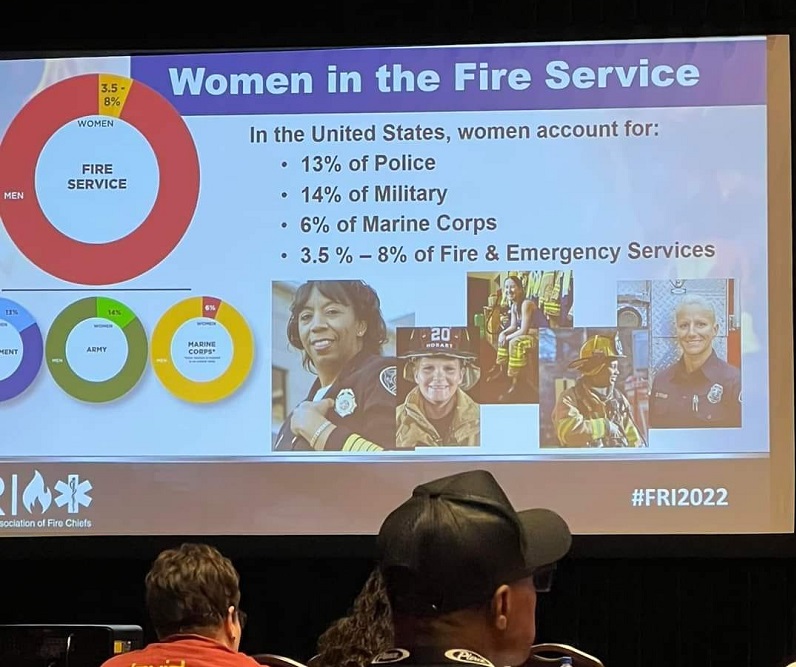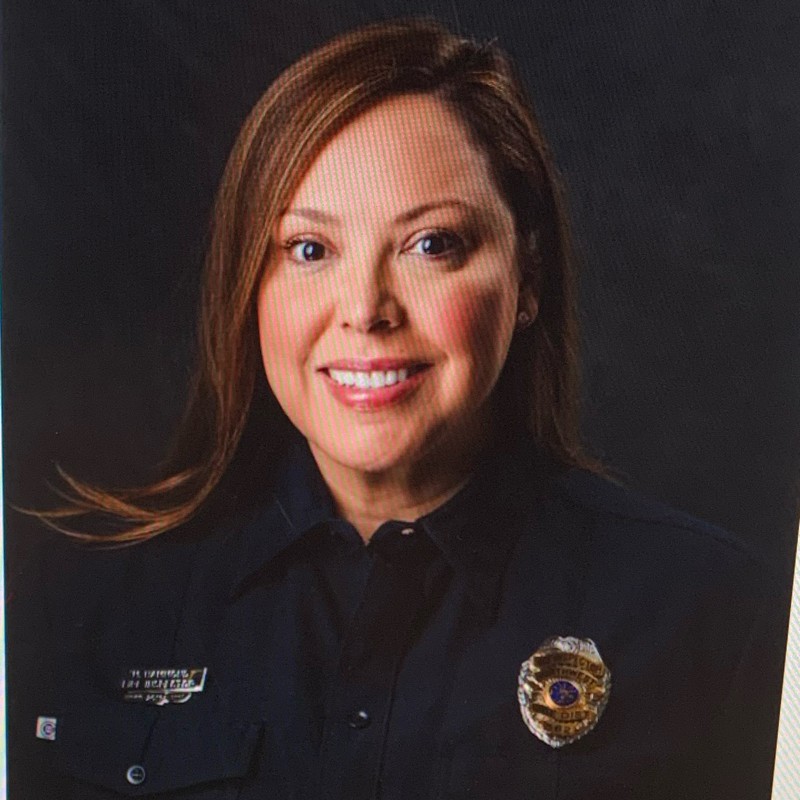By: Robert Avsec, Executive Fire Officer
I recently came across a post on LinkedIn by a fire service colleague and LinkedIn connection, Shara O’Neal Thompson, announcing that she’d had her first submission, Building Psychological Safety for Inclusive Firehouses, published in Firehouse Magazine 2022 August edition (After reading the piece, I think you’ll agree that it won’t be her last!). Here’s an excerpt from her LinkedIn posting:
Psychological safety is important for diversity and inclusion initiatives because a lack of feeling safe within the team will make firefighters not express their thoughts outside the majority, not reveal mental health struggles, and not take risks for learning in the group.
Psychological safety also includes training in cultural improvement. No one should be judged and made to feel ashamed while learning new information on inclusion.
At the same time, I came across this photograph from another fire service colleague, Laura Wertish, on Facebook:
I responded to Laura’s post with this comment:
“Borrowed” this one from my fire service colleague and member of the “Avsec Nation” Laura Wertish. If it’s true that “a picture is worth more than a thousand words,” then this pic is a tome (Kids, that’s a really big and heavy book!).
The first women, like the legendary Brenda Berkman, entered the career fire service in the mid-1970’s. By my math that’s approaching 60 YEARS! And you’re telling me that this is the best we can do at attracting, hiring, and KEEPING women in career firefighter and officer positions?
SMH,
64-year-old, white guy, and retired battalion chief (That would be me).
Now, you might call me “crazy”, but I think that the dearth of women serving as career firefighters—when compared to other professions that are dominated by the majority group—and Shara’s piece on psychological safety in fire service organizations are very much related.
Why does the fire service have difficulty attracting, hiring, and keeping women on the job?
Because in too many fire departments there’s still a “gauntlet” that women have to “run” every day! And that gauntlet is not a single challenge, but rather multiple challenges:
1. Entrance exams (both physical and written) that still have a bias favoring male applicants because they are not bona fide exams. For written examinations, why do many fire departments still use written examinations that require some degree of knowledge of firefighting? Increasingly, other organizations are focusing on test instruments that support a notion of “Hire for attitude, train for skills.” One test instrument that I found, A Guide to the Written Test for the Firefighter Series from the New York State Department of Civil Service, seems to support that notion. This excerpt from the General Information Section:
Test questions: All the test questions included in the Firefighter examination series are multiple-choice questions. No specialized knowledge of firefighting is required. See the sample questions in the subject area sections in this test guide for examples.
I’m perplexed as to why fire departments continue to use physical ability tests that still focus on an individual’s physical ability to do firefighting tasks (e.g., raise a ladder, drag a victim) single-handedly while we know that too many men (particularly incumbent firefighters) can’t complete those tasks solo.
Read Next: How Many Firefighters Does It Take to Rescue One Firefighter?
2. Lack of maternity leave policies. A woman should not have to give up her choice of whether to have children just because she becomes a firefighter. It’s no longer acceptable for a fire department to deny a pregnant firefighter an alternate duty assignment—once she and her physician determine when she should leave her firefighter duty assignment—just because “We don’t do that for other firefighters who have an injury.” Being pregnant is not an injury! See Do Fire Departments Have to Provide Light Duty for Pregnant Firefighters? written by another fire service colleague, and legal guru, Curt Verone.
In 2018, a fire service colleague, Marcela Donovan-Hammond, who at the time was the Fire Marshal for the City of Nogales (Ariz.) Fire Department, wrote a guest blog for me entitled, Firefighter Pregnancy: Why is this so hard? In her piece, she wrote of her experiences (good and bad) as she gave birth to three children. I highly recommend reading her story, especially if your fire department does not have a maternity leave policy.
And once she has a child, a firefighter mom shouldn’t have to fight for the right to care for her child (e.g., pump breast milk while on duty) once she returns to active duty. Nor should she have to obtain this nourishment for her child in a bathroom (How many male firefighters would want to eat their meal in a bathroom at their fire station?).
You don’t have any private space in your fire stations where a woman can pump her breast milk? Build it! If you want women to become firefighters in your department, and stay on as firefighters, you need to make the investments that show you truly care!
Read Next: Pregnant women in public safety is not something new
3. Work schedules that make it difficult to have a family. Robert Creecy, former fire chief with the Richmond (Va.) Fire Department, “chimed in” on the Facebook post as well:
Until we as an industry start rethinking our business model, with everything on the table for consideration (including deployment and shift schedule), then diversity issues will continue to lag way behind, especially now that we are seeing dwindling numbers of all applicants, qualified or not.
The 24-hour work schedule favored by many fire departments makes it extremely difficult for a parent to obtain childcare, especially for a single parent, a role that many female firefighters find themselves in. This issue is likely only worsened for women working for fire departments that have adopted 48 or 96 hour work schedules.
The reality of women firefighters is that they become pregnant; treating them right is best for everyone on the job. Get informed. Get educated. Develop legal policies. Train your officers. This article from Linda Willing How to deal with the pregnant firefighter, is a “must read” for fire service leaders (Or risk getting your fire department sued with a very good chance of “losing the farm”).
It’s 2022, and more fire departments need to become proactive in addressing the issues I’ve outlined above. Strive to make your fire department a place where women can succeed and thrive without having to “run the gauntlet” every day. I believe that’s how you can attract, hire, and keep more women firefighters.
Resources
What you don’t know about FMLA can hurt you
IAFC: Pregnancy, Maternity, Paternity Leave, and Lactation-Policy
IAFF: Sample Contract Language for Pregnancy Policies
The Pregnancy Discrimination Act of 1978
 Fire & EMS Leader Pro The job of old firefighters is to teach young firefighters how to become old firefighters!
Fire & EMS Leader Pro The job of old firefighters is to teach young firefighters how to become old firefighters!

